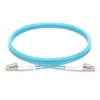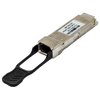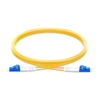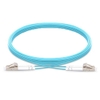Fiber Optics: Wavelength Division Multiplexing (WDM) Explained
Created on: Jun 12, 2019
Singlemode and Multimode Fiber each have their own sets of pros and cons and both can utilize this tech. However because of the longer distance and higher bandwidth capabilities in Singlemode Fiber, researchers looked for ways to improve the amount of data sent on each fiber. They came up with the most interesting and powerful technology in Fiber Optics to date: Wavelength Division Multiplexing.
Important Components:
Amplifier
Used to regenerate the signal over long distance transmission. The light passes through an Erbium-Doped Fiber and is inputed into a "Pump Laser" which increases the signal strength. Often used in DWDM applications over long distances.
 Amplifiers are used in long distance transmission to increase signal strength.
Amplifiers are used in long distance transmission to increase signal strength.

EDFA Erbium doped fiber amplifier 30mW~400mW Single wavelength Booster Amplifier
Multiplexer
Often referred to as the passive mux, is the work horse of the operation. This device gathers all of the data streams and combines them into one signal. At the receiving end of the fiber, there is another Multiplexer designed to do just the opposite by separating back out the data streams through filters and sending them to the respective receivers.
 Multiplexers can combine several data channels into one to optimize efficiency and minimize attenuation.
Multiplexers can combine several data channels into one to optimize efficiency and minimize attenuation.
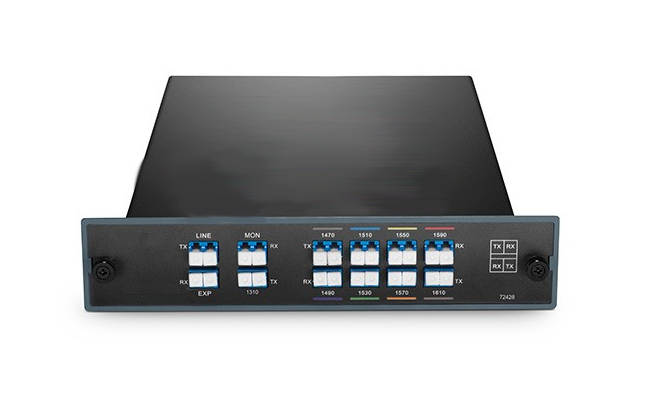 Displayed is a CWDM/DWDM Hybrid Solution with 8 Channels C53-C60. This comes with a Monitor, Expansion and 1310nm Port and connects to LC/UPC ferrules. Dual Fiber DWDM Mux Demux, FMU Plug-in Module
Displayed is a CWDM/DWDM Hybrid Solution with 8 Channels C53-C60. This comes with a Monitor, Expansion and 1310nm Port and connects to LC/UPC ferrules. Dual Fiber DWDM Mux Demux, FMU Plug-in Module
Transceiver
These devices transmit data signals from SAN and IP switches to optical signals in the form of optical laser beams. These light rays and wavelength-specific and calculated to not interfere with each other while traveling through the fiber to the receiving end. Bi-Directional Transceivers are used to transmit and receive data over a single fiber. This is especially useful in saving costs in new installations, as only one fiber needs to be installed instead of a "zip-cord" or duplex fiber.
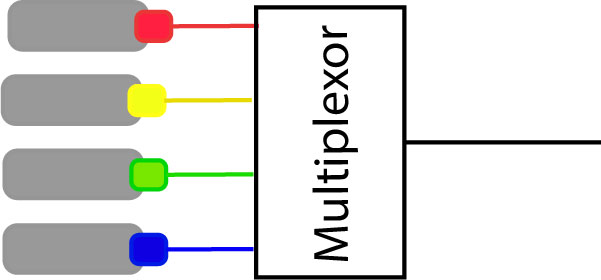 Displayed is a 4 Channel scenario, if the user wished to have cross-communication, bi-directional transceivers could be installed to include uploading capabilities in this set up.
Displayed is a 4 Channel scenario, if the user wished to have cross-communication, bi-directional transceivers could be installed to include uploading capabilities in this set up. 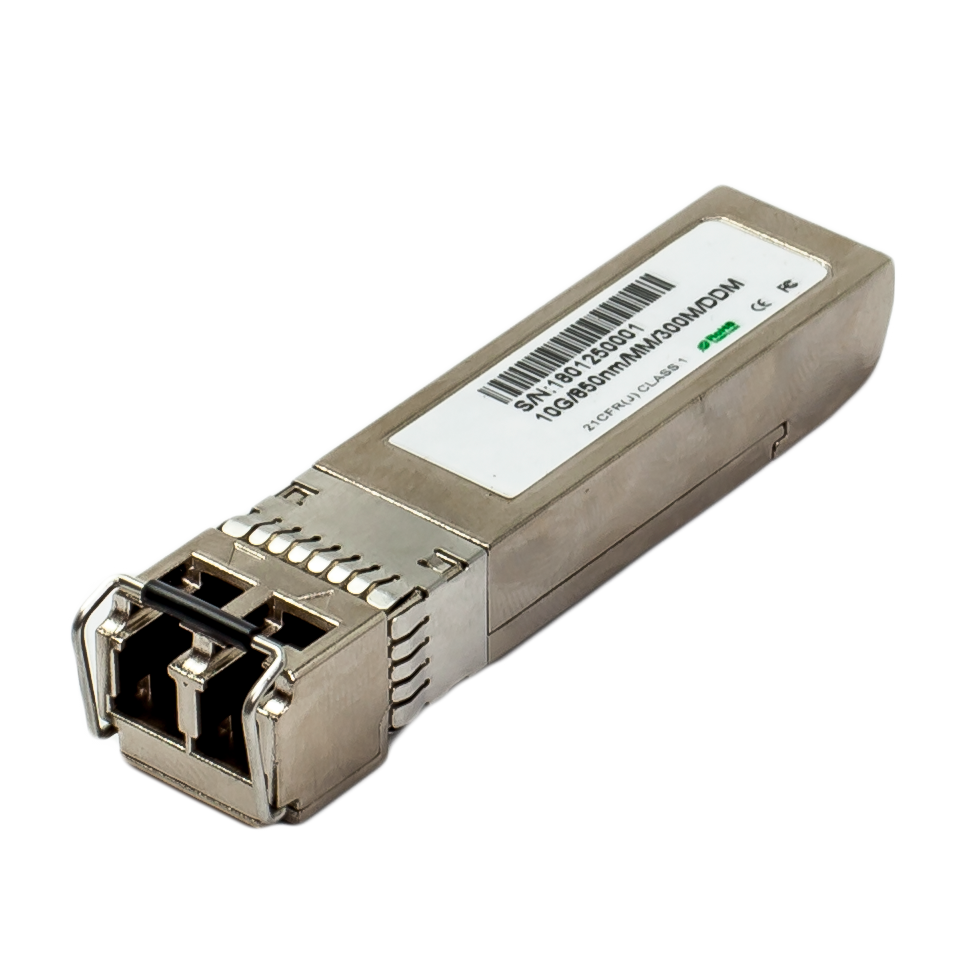 Displayed is a Duplex Transceiver for connecting a Duplex LC fiber connector. This is commonly used in transmitting and receiving data.
Displayed is a Duplex Transceiver for connecting a Duplex LC fiber connector. This is commonly used in transmitting and receiving data.
Wavelength Division Multiplexing(WDM):
This technology can effectively turn 1 channel of fiber into upwards of 80 channels depending on the wavelength being used. This is done by combining several light rays into one transmission. WDM is often used in long distance applications to save money by increasing existing fibers capabilities. A single fiber can now be shared for several services including voice, data, storage and video. Although it is common to see fiber pairs in this application for traffic in both directions, it is possible to use the same fiber for communication in both directions.
How it Works: Different wavelengths of light propagate in a single fiber without interfering with each other. The process of combining the light is called Muxing. Think of how a prism separates light into multiple colors or wavelengths of light. Muxing essentially does the inverse effect of this by converting multiple wavelengths of optical laser data streams into a singular beam. The single light beam then travels the distance of the fiber until it is Demuxed. This will multiply the beam into different channels, where the light is then filtered to allow only one wavelength of light through. These isolated data streams are then connected to independent transceivers where the data is received. As the technology advanced, different frequencies and wavelengths were used to optimize the technology in different applications.
Short Wavelength: SWDM generally provides 4 channels of communication and utilizes the shorter wavelength end of the Fiber Optic Spectrum (around 850nm). Typically each channel is centered with 30nm spacing between each to acheive higher data speeds.
Coarse Wavelength: CWDM can provide up to 20 channels and uses broader spaced wavelengths over the full range of the fiber bandwidth (1280 to 1650nm). When this wavelength is used with the VCSEL Laser technology, the need for temperature control and laser screening decreases increasing cost effectiveness. However, CWDM must use Low Water Peak Fiber in order to reduce attenuation on critical wavelengths.
Dense Wavelength: This wavelength technology is used where high volume data transfer is needed. DWDMs require fiber amplifiers when transmitting long distances. Because of this, tightly spaced wavelengths at around 1450 to 1650nm (operating frequency of fiber amplifiers) are used in DWDM applications. DWDM's even offer up to 80 channels when used with precision filters and temperature control. Although this is some seriously impressive tech, few applications prove this to be cost effective as it is 3-5 times more expensive than alternative methods of WDM.
To learn more about what wavelengths are and how they are used in Fiber optics, check out our blog on the topic.
Where Fiber Patch Cords Fit into this:
Fiber Optic Patch Cords are essential in WDM applications, they connect the transceivers to the Multiplexer on each end. We offer many different Singlemode Patch Cables and Multimode Patch Cables for every data center need. Before making any decisions, we recommend educating yourself on some important topics if you are unfamiliar with fiber optic technology. You should know which Fiber Connector you require , and know which Ferrule Polish to choose.
The future of WDM?
With the recent release of OM5 Multimode Fiber or Wideband Multimode Fiber (WBMMF) was created with one main application in mind; Wavelength Division Multiplexing. WBMMF can effectively transmit signals using WDM at wavelengths from 840-953nm, with backwards compatibility to OM4 fiber at 850nm. Another key feature of OM5 is the wide bandwidth allows cross communication in the same fiber. To learn more about this new and interesting technology, check out our blog.
Do you think this technology is useful given the added equipment costs? Do you think Wideband Multimode Fiber soon outdate the current OM3/4 standard for multimode?

Author:
Brian Sackett
Marketing & Development

